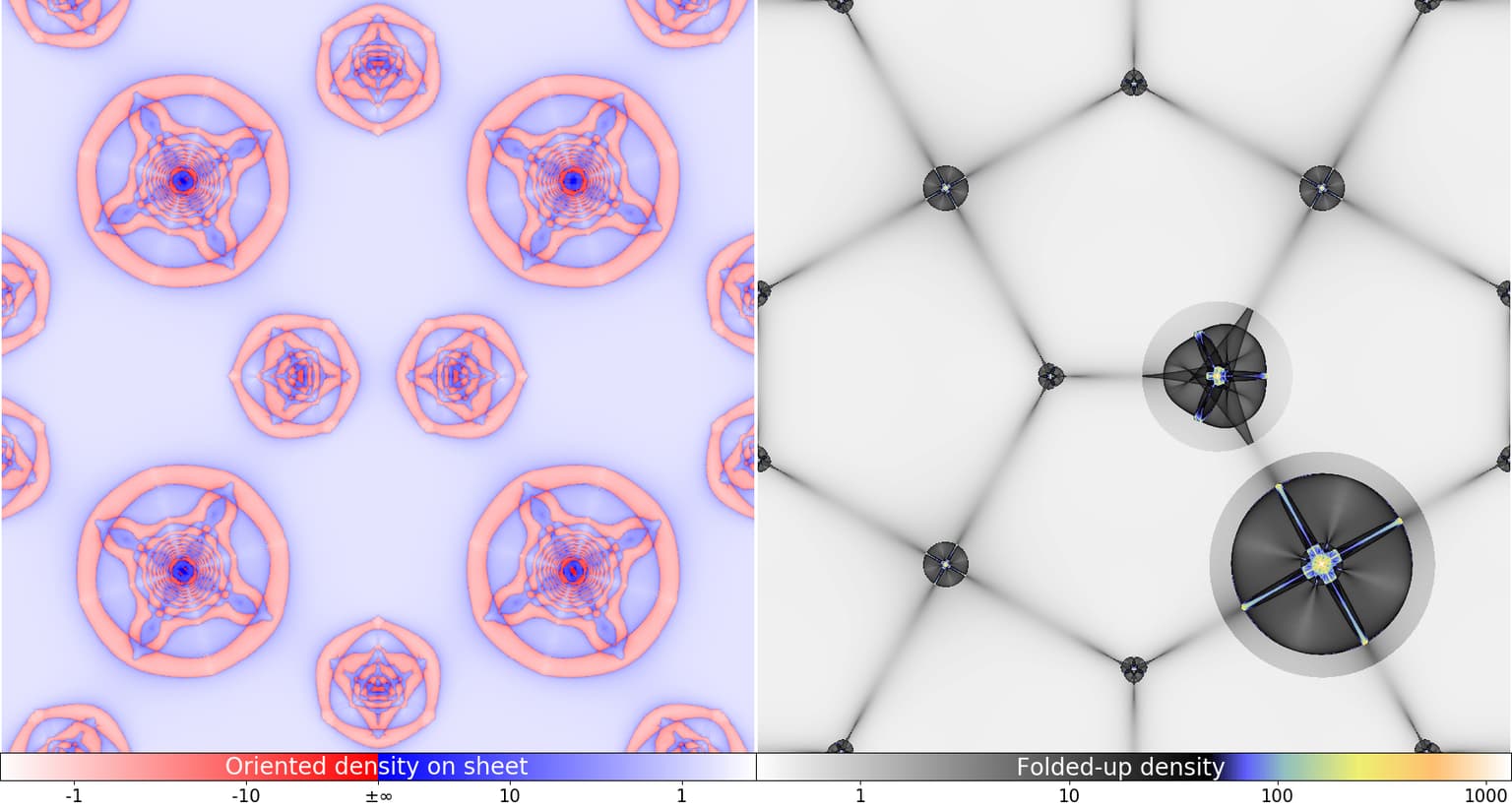2021 Joint Mathematics Meetings
Mark Neyrinck
Artists
Mark Neyrinck
Ikerbasque Fellow
Physics Department, University of the Basque Country, Bilbao, Spain
Bilbao, Spain
Statement
Gravity is thought to build up structures in the Universe out of dark matter, which starts out as a uniform sheet, but folds and stretches, somewhat like origami (https://arxiv.org/abs/1408.2219) to create galaxies, like those appearing in this work. A Cairo pentagonal geometry, with both degree-3 and degree-4 nodes, emphasizes how a node's neighbors influence its inner geometry. The folds that appear after unwrapping each galaxy, going from right to left, produce a hidden, mandala-like geometry.
Artworks

An origami crease pattern (left) for the stretching/folding of a 2D dark-matter sheet in 4D position-velocity phase space, constructing the galaxies at right, with 2 nodes zoomed-in. Caustics/folds/creases separate +(blue) and -(red) parities at left. This 2D universe is specially arranged to have galaxies at nodes of a Cairo pentagonal tessellation. Each galaxy starts out circular, but like an individual interacting with others, its interactions with neighbors shape its innards. In initial, Lagrangian space, the caustics are roughly triangular and square, alternating in toward the center with their dual shapes, each node a mandala. Computed with the ColDICE Vlasov-Poisson code, Sousbie & Colombi 2016, JCP, 321, 644, vlasix.org